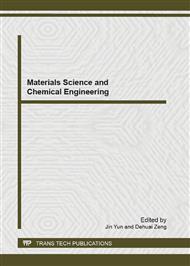p.57
p.63
p.68
p.72
p.77
p.83
p.87
p.92
p.96
Optimization Studies on Acid Hydrolysis of Pretreated Oil Palm Empty Fruit Bunch for Production of Xylose by Application of Response Surface Methodology
Abstract:
Oil palm empty fruit bunch is a lignocellulosic material from palm oil plantations. It is a potential source of xylose which can be used as a raw material for production of xylitol. Using of lignocellulosic waste for bioconversion to fuels and chemicals is justifiable as these materials are low cost, renewable and widespread sources of sugars. The objective of the present study was to determine the effect of H2SO4 concentration, reaction temperature and reaction time for acid hydrolysis of pretreated OPEFB, pretreated OPEFB with reaction temperature, reaction time and NaOH concentration were 130 °C, 40 min and 15% (w/v), respectively to achieve high xylose yield. Batch reactions were carried out under various reaction temperature, reaction time and H2SO4 concentration. Response Surface Methodology (RSM) was followed to optimize acid hydrolysis in order to obtain high yield of xylose. The optimum reaction temperature, reaction time and H2SO4 concentration were found to be 140 °C, 90 min and 7% (w/v), respectively. The maximum value of xylose was obtained 56.39 g/l by using the above condition. The best result of xylose yield obtained was 126%.
Info:
Periodical:
Pages:
77-82
Citation:
Online since:
May 2013
Authors:
Price:
Сopyright:
© 2013 Trans Tech Publications Ltd. All Rights Reserved
Share:
Citation:


